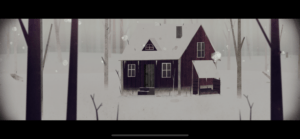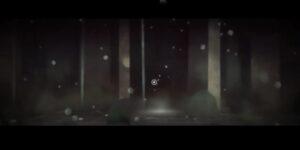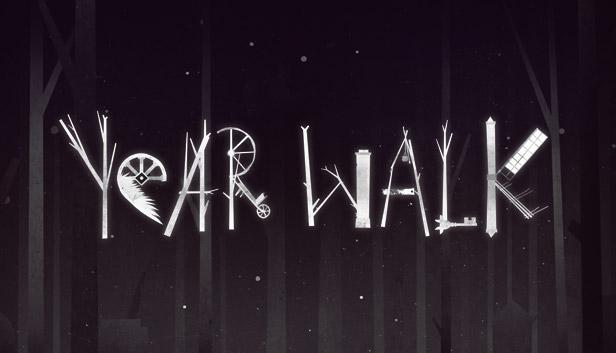Year Walk, created by Simogo and playable on iOS, Windows, and Wii U, is recommended for those who are 13+ with an interest in eerie, spooky mystery games. Based on Swedish folklore, the story follows Daniel Svensson as he ventures on a dangerous year walk and interacts with several mythical creatures like the Brook Horse, Hulstra, Mylings, and Night Raven in hopes of seeing what his future holds.
Through its hauntingly beautiful setting, minimalist design, and clever use of supplementary content, the game draws players into a first-hand experience of Swedish folklore. The mechanics of simple controls, the inclusion of music, the lack of a map, and the integration of a companion app all contribute to the immersive storytelling experience.

Year Walk is unique in its storytelling experience, both in terms of visuals and controls. Unlike many other games that utilize complex controls requiring the player to jump, run, and fight, or with detailed visuals as seen in the variety of art styles and backstories of What Remains of Edith Finch, Year Walk embraces simplicity. As players navigate through the snow-covered forest, desolate except for a few buildings and objects, they are filled with a sense of fear and unease, one that mirrors the feelings of those who participated in the traditional walk. In addition, players are able to move around the world simply by swiping vertically or horizontally. This allows players to spend time focusing on the story unfolding in front of them rather than learning the complex controls. This simplicity of movement creates an illusion of space, allowing players to explore the environment and discover the mythical creatures at their own pace. The lack of a map further enhances the narrative experience, mirroring the disorientation and confusion faced by those who actually participated in the year walk ritual in the dead of night. Thus, players must rely on their memory and intuition to navigate the forest, continuously getting lost and losing their bearings, but heightening the immersion in Daniel’s journey.

Music was effectively used not just to set the tone of the environment, but as a mechanic to guide the player through the mystery. The game contained little music, and its use foretold significant changes in the narrative For example, we see the shift in the positive soundtrack at the start when Daniel visits his lover Stina, to the harrowing soundtrack when approaching the Brook Horse. In addition, initially the player follows the mythical creature Huldra, leading them into almost complete darkness. In order to reach the Huldra, players need to rely on sound and follow the paths that are in tune. Given my lack of music capability, this puzzle took me a while to complete and I had to repeat the same sequence at least twenty times. However, the satisfaction of finally reaching the Huldra made it all worth it. Thus, this use of sound not only adds challenging fun to the game, a positive change from the typical visual puzzles in mystery or escape-style games, but also enhances the storyline by connecting back to the folklore as the Huldra is said to entrance men by her song to lure them deep into the forest.
One particularly clever mechanic is the use of a mysterious box with dials of symbols, which adds additional lore and backstory to the narrative. Although seemingly unnecessary during gameplay, after completing the game, players are directed to a companion app where they can use a code provided during the end credits scene to unlock additional information. Players can uncover journal entries from a researcher obsessed with Swedish folklore and the concept of the year walk, and use clues in the entries to open the mysterious box and uncover the final ending. This integration of supplementary content enriches the player’s understanding of the true narrative and provides a sense of closure to Daniel’s year walk. One suggestion would be to integrate the companion app into the Year Walk app itself. Having it accessible directly from the game would allow players to quickly learn about the folklore whilst relishing in the ambiance rather than needing to completely leave the app, breaking the immersion of the world.

The use of arcs also drives the narrative forward. The game contains several smaller arcs surrounding the discovery of different mythical creatures like the Mylings and the Huldra. These sub-arcs contribute to the larger, overarching arc which follows the walk of Daniel towards the final destination of the church, where we discover his fate and future. From the shocking first ending where Daniel kills his lover to the hidden arc where he seemingly sacrifices himself to save Stina, Year Walk presents players with a narrative experience that is both thrilling and haunting.



